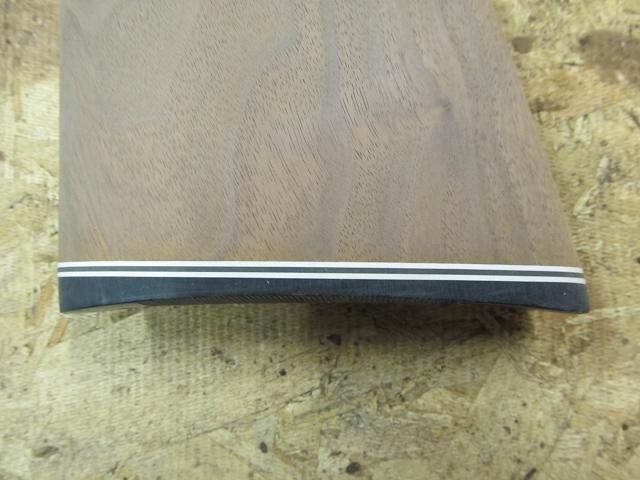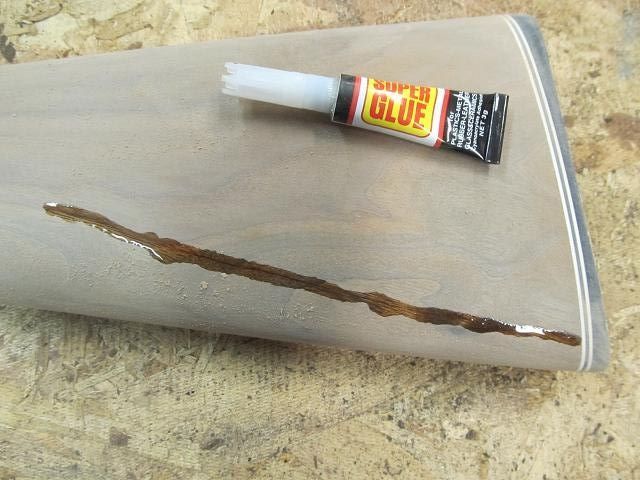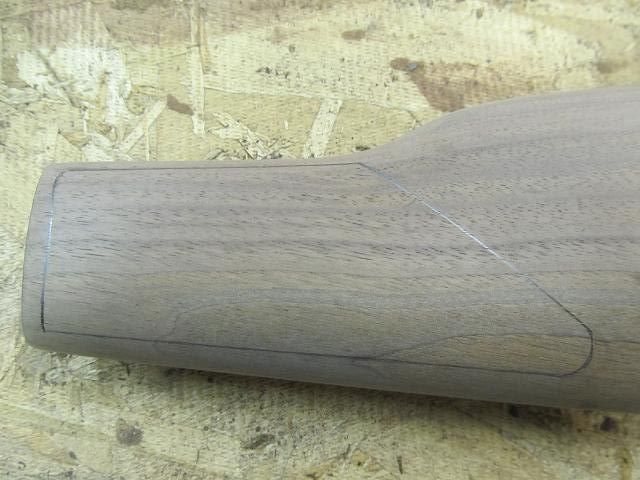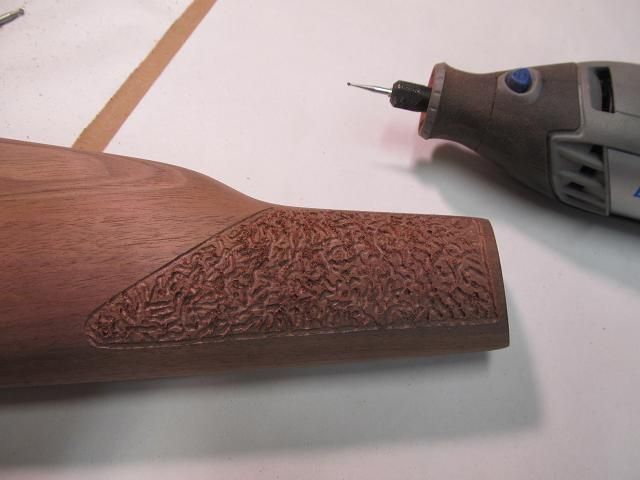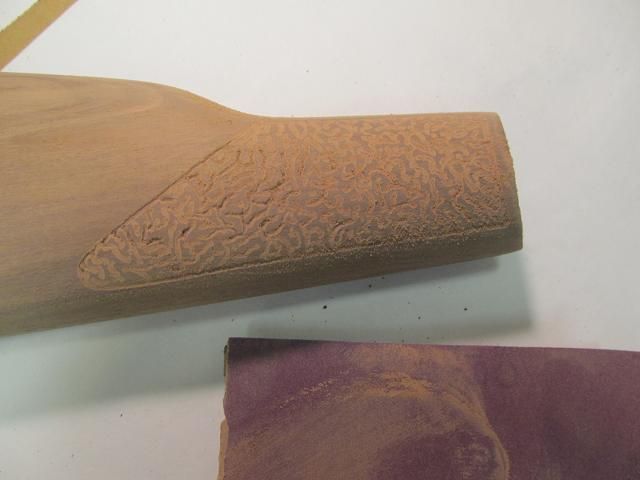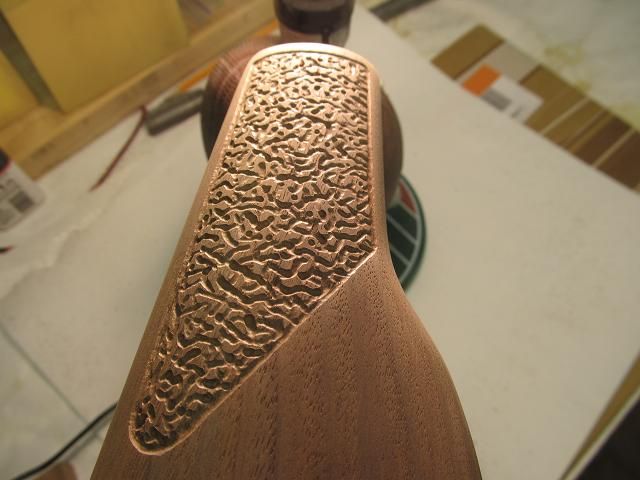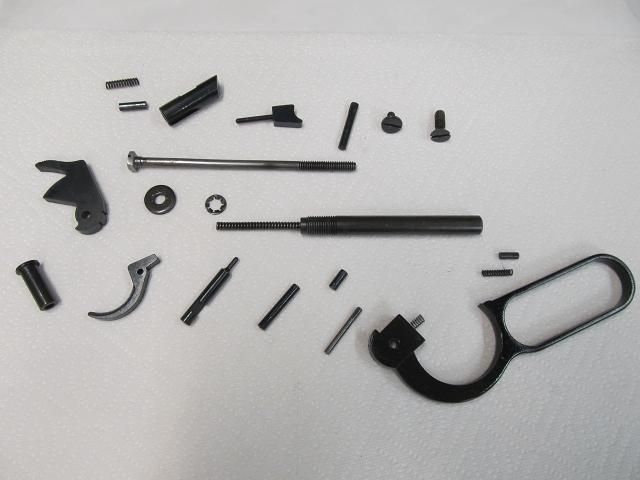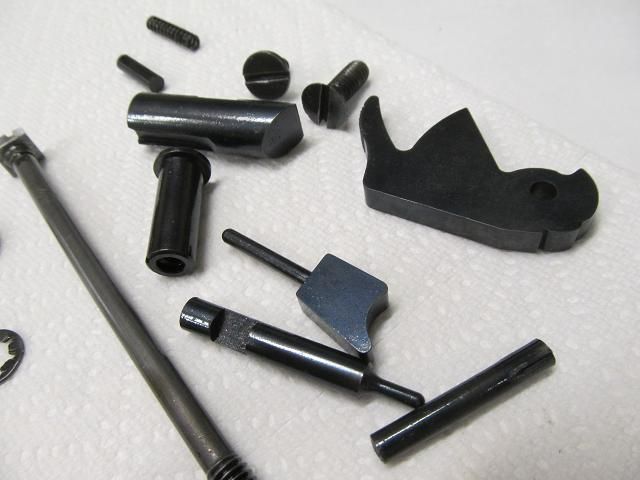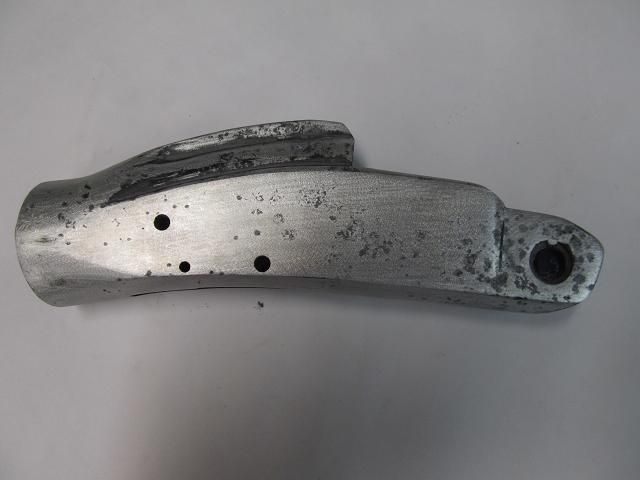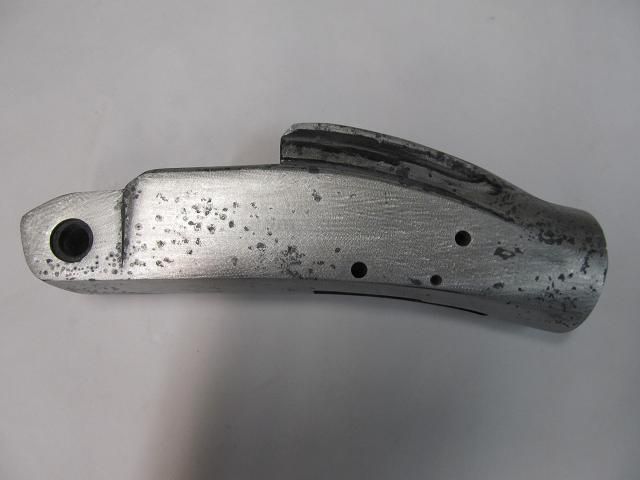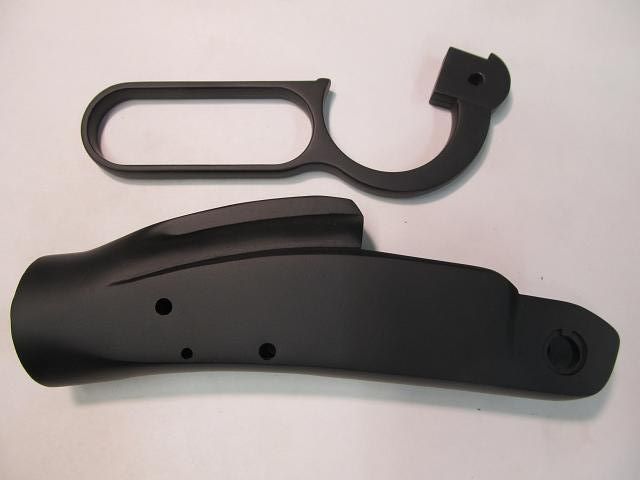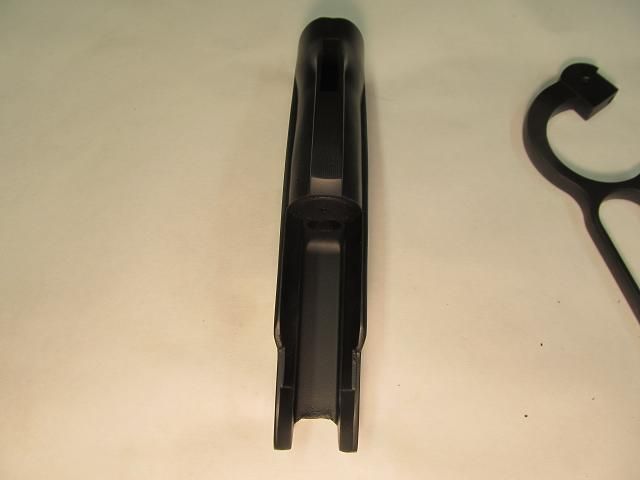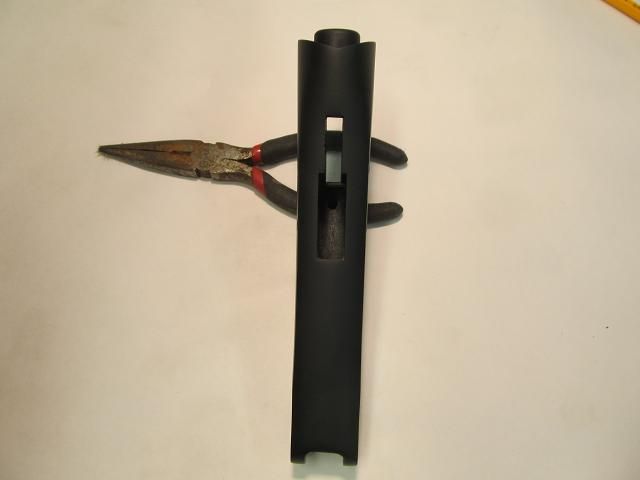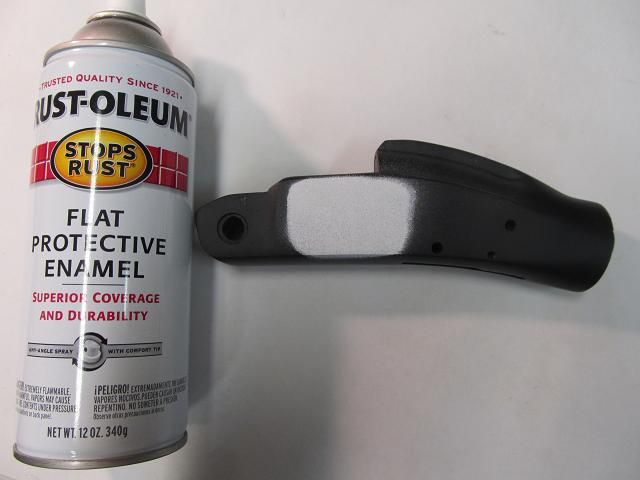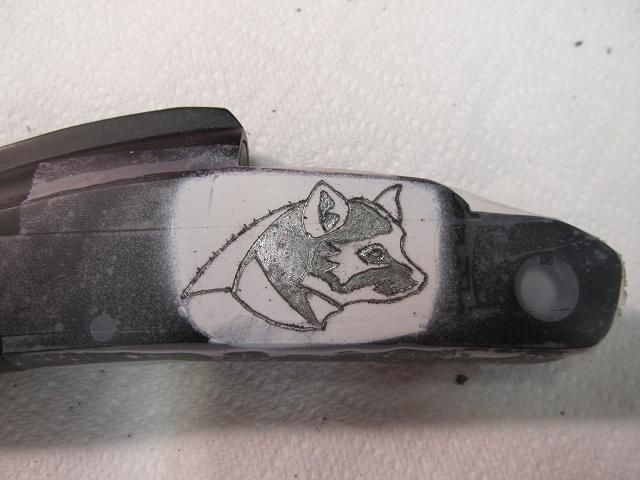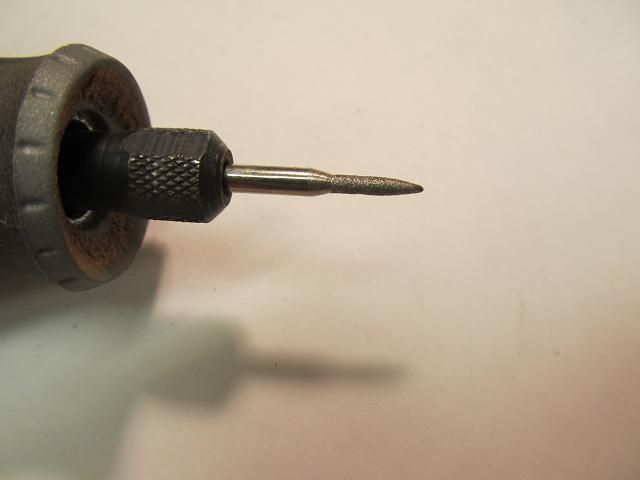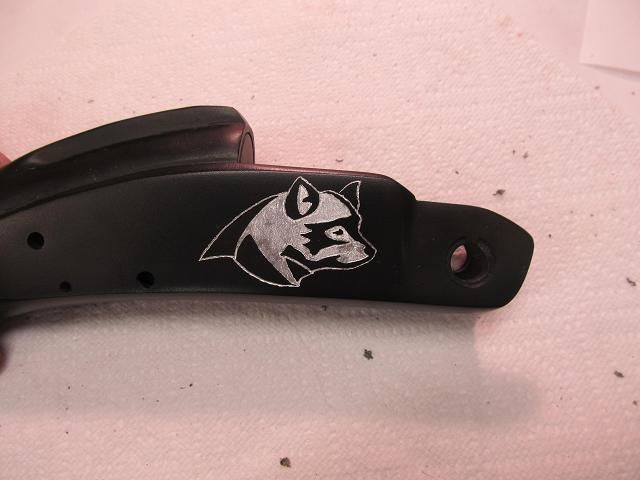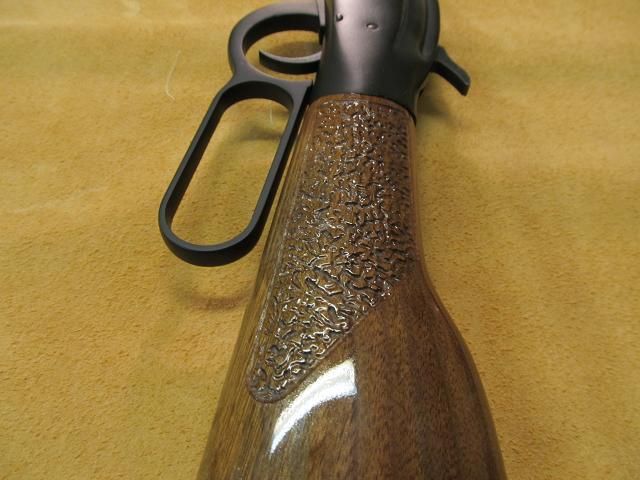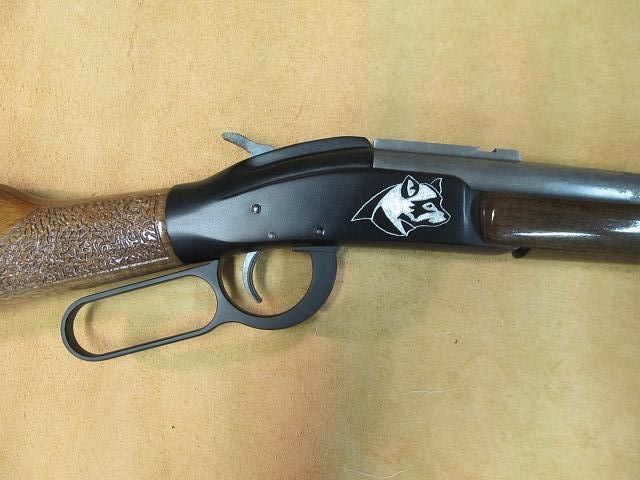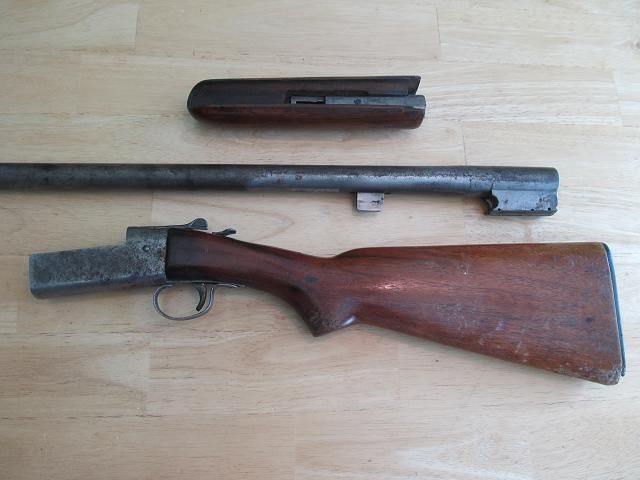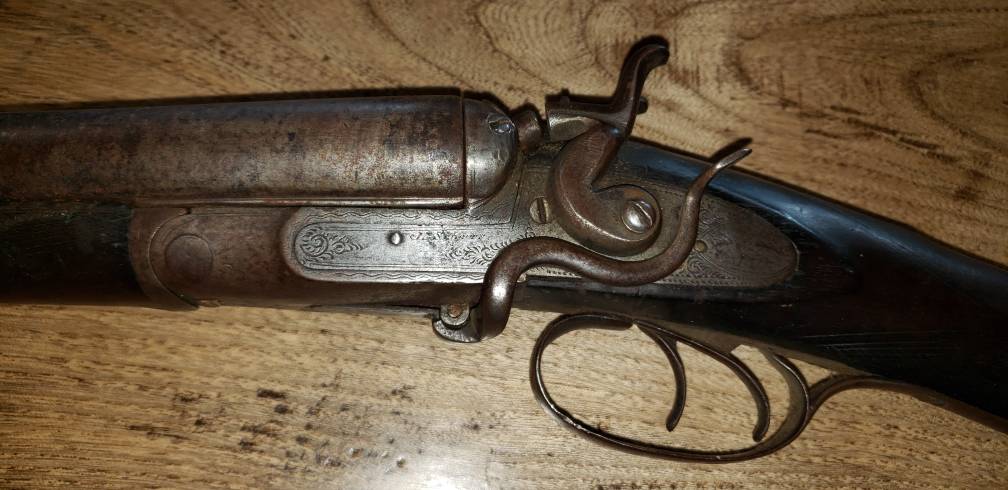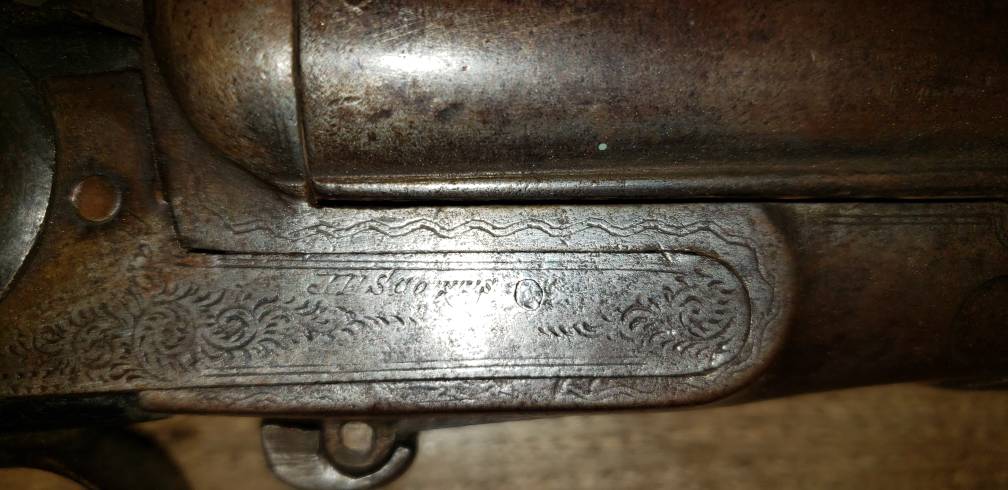Ron Kulas
Active Member
Here is another gun rehabilitation project I did. This old shotgun has been sitting disassembled in a coffee can in the corner of my shop for the last 4 or 5 years. It was given to me be Dan Infalt. It’s a throw away for a variety of reasons but I never threw it away. This long winter has me doing more projects in the warmth of my shop so the coffee can gun gets a 2nd look.
The gun spent some time in a closet with an angry raccoon. What raccoon urine can do to wood and metal is amazing. I contend that in concentrated form could be weaponized. Needless to say, this gun is in terrible shape. I don’t think the barrel can be saved due the rusting.
A bit about the gun. This is a Ithaca Model 66 super single, Buck Buster. This gun was made by Ithaca from 1967 to 1979. Oddly this gun has no serial number anywhere on it but serial numbers were not mandated until 1968. The only info is stamped into the barrel identifying the gun. This particular gun is chambered in 20 ga. It's a lever action only in that the lever opens the breech to load a shotshell rather than a lever behind the hammer. Here is some info from the past.
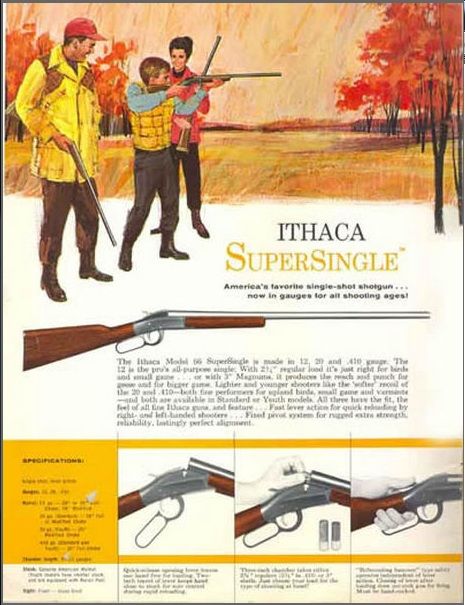
Compared to other guns it doesn’t have many parts.
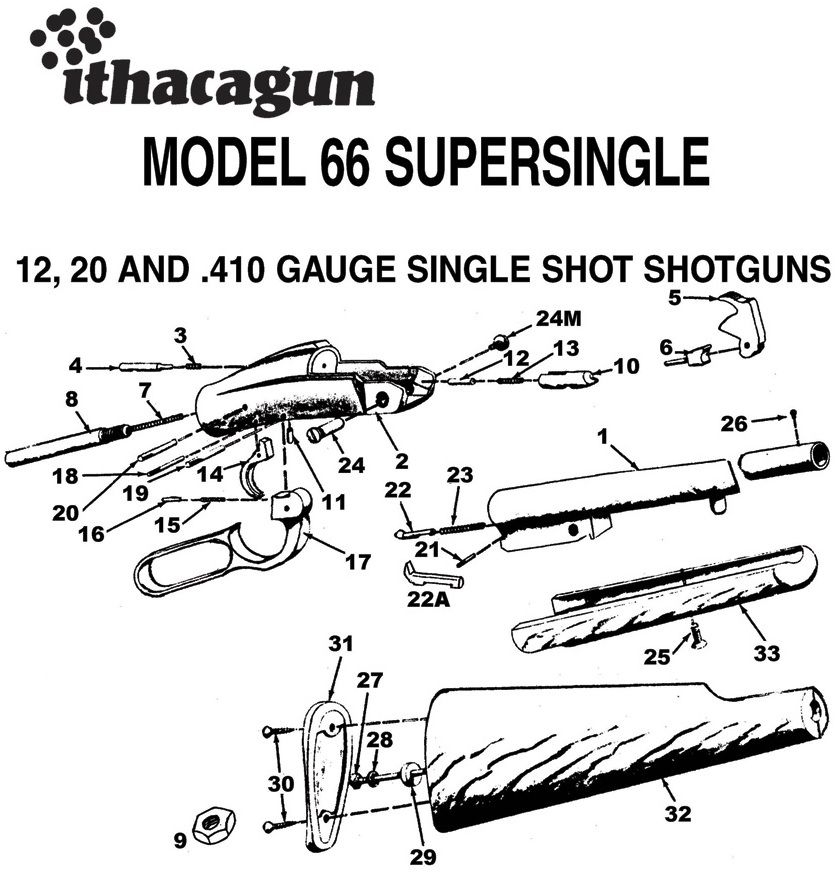
Its not a particularly valuable gun.
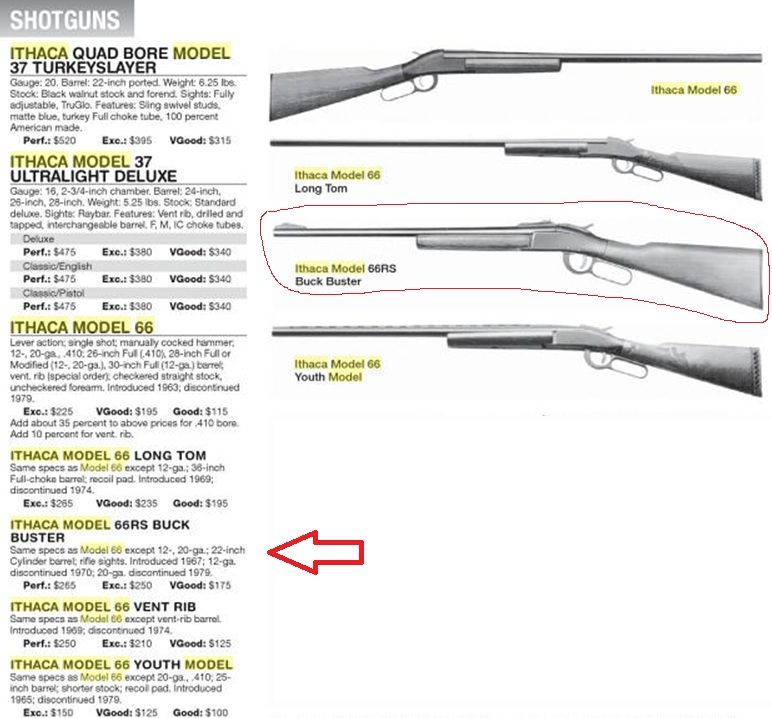
Back to this coffee can gun. It takes little imagination to understand what raccoon urine can do to steel but I am impressed at how it reacts with aluminum (or pot metal) this anodized metal should not corrode but raccoon urine has created a white almost glass-like patina that etched the aluminum.
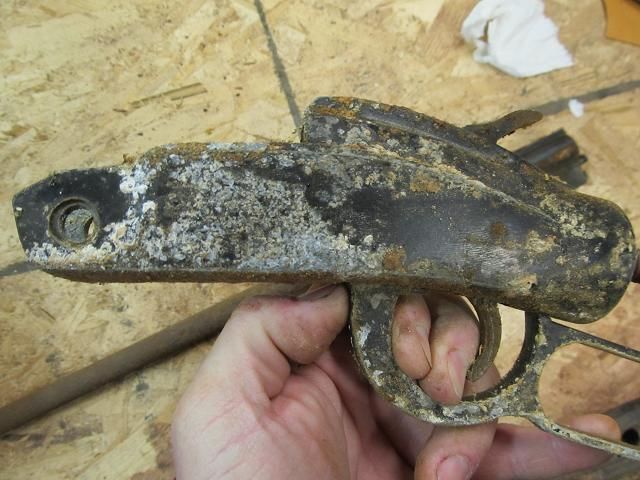
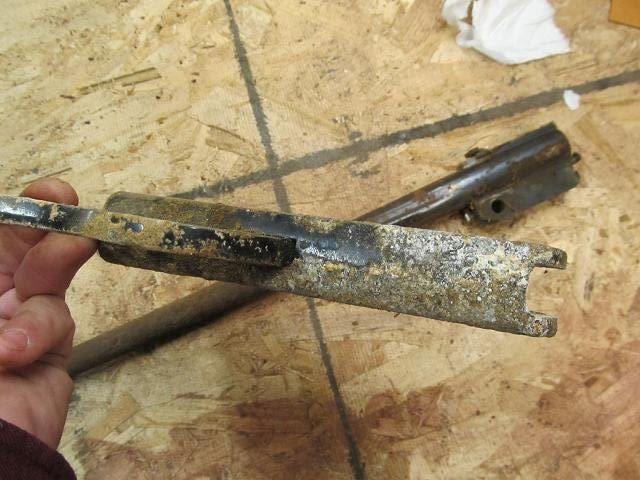
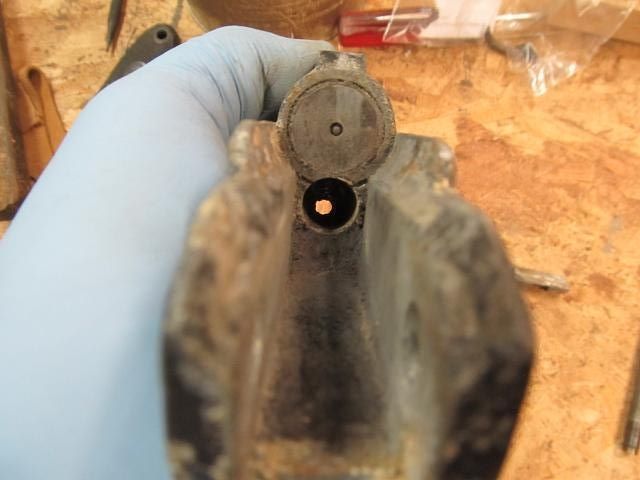
The effects on the barrel are devastating.
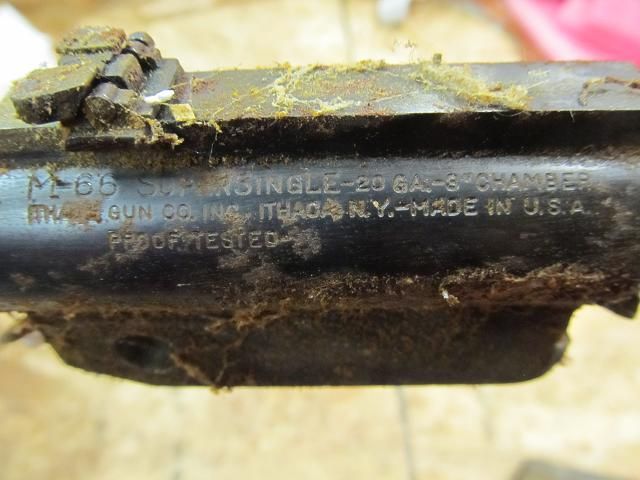

The pitting is so deep I don’t think there is any hope for the barrel.
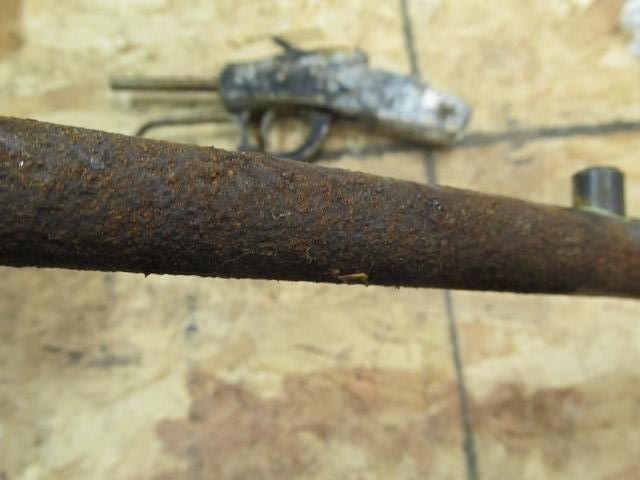
There were some lose parts in the coffee can that the exploded schematic help me identify.
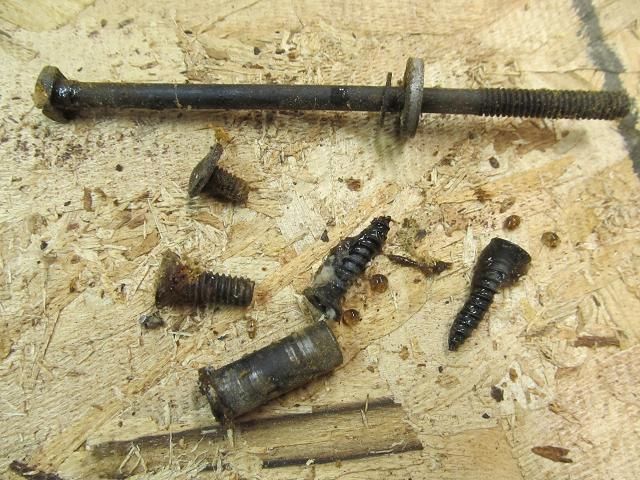
The parts inside the gun are likewise in bad shape.
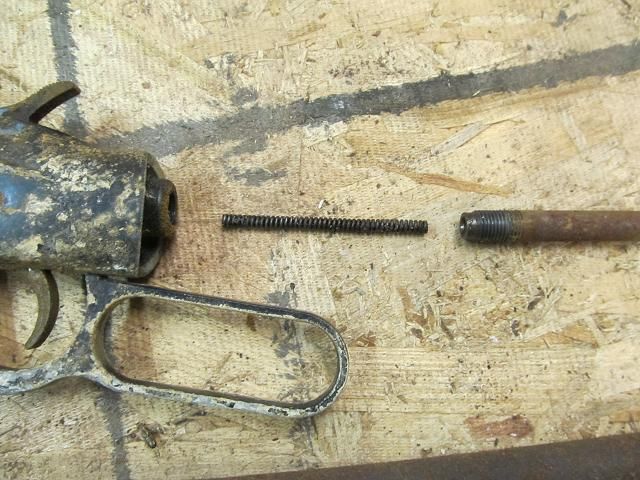
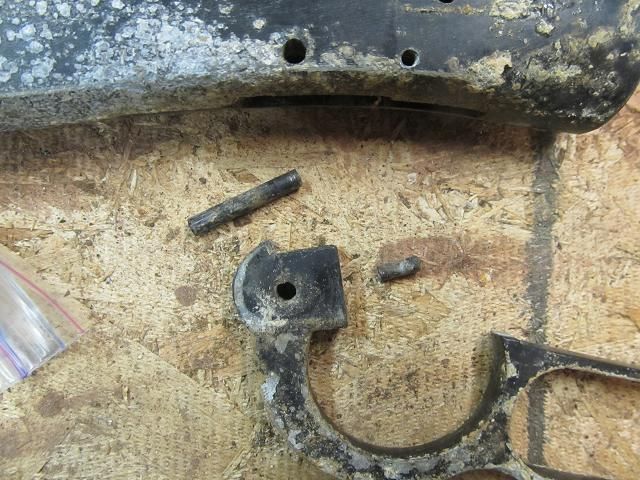
The stock is cracked (visible below the white line) and the front grip is pretty darkened (or it may just be a dark piece of wook that looks different than the butt stock wood) . Both are dinged up and scratched but at least there is something to work with and it still has the original Ithaca plastic butt plate. I will add white and black spacers to the butt plate just because I like how it looks.
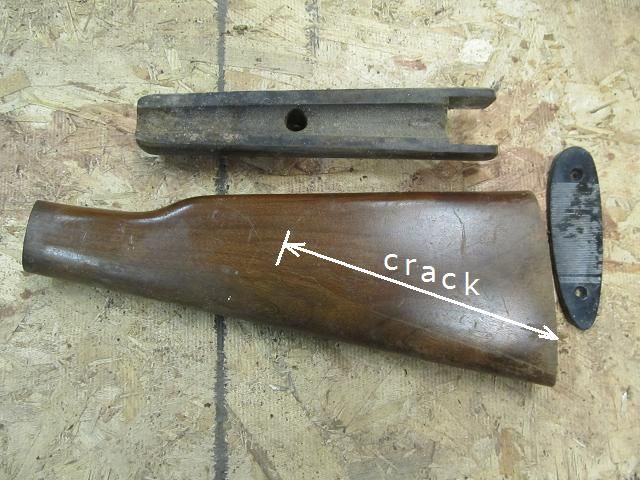

I think I can repair the cracked stock but even if I cant, I can easily find a replacement online. Since the stock is in such poor shape I have little to lose by trying my hand at stippling the grip. Its something Ive always wanted to attempt and this is the perfect piece of wood to try it on because if I screw it up, Im not out much.
The first step is to get a good look at what Im dealing with in regards to the barrel. I soaked it in naval jelly for 24 hours which is far longer than I have soaked anything to remove rust.
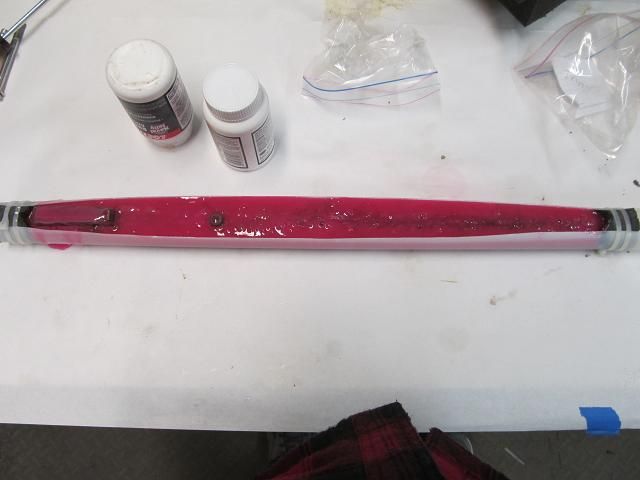
The rust was so bad It made the jelly bubble up while attacking the rust. Ive not seen that before. It could be the raccoon urine. I cant be sure.
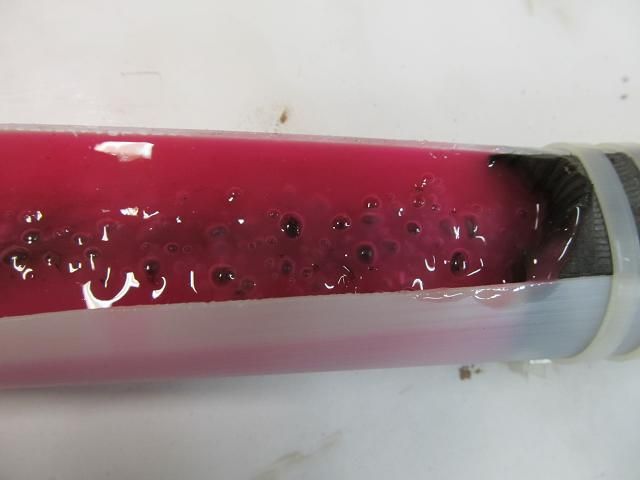
After 24 hours I rinsed under running water and then took a wire brush to the barrel.
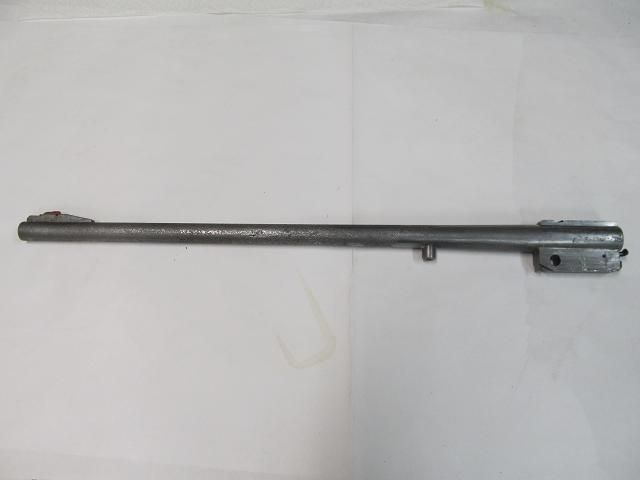
It looked pretty good at the breech end.
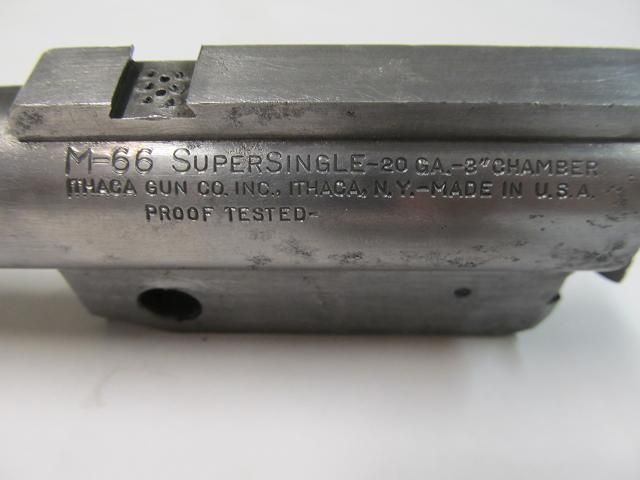
Sadly though from the mid point to the muzzle it is just too pitted to be safe to use. If your reading this and know of a source for a 20 ga buck buster barrel, don’t be shy.

The gun spent some time in a closet with an angry raccoon. What raccoon urine can do to wood and metal is amazing. I contend that in concentrated form could be weaponized. Needless to say, this gun is in terrible shape. I don’t think the barrel can be saved due the rusting.
A bit about the gun. This is a Ithaca Model 66 super single, Buck Buster. This gun was made by Ithaca from 1967 to 1979. Oddly this gun has no serial number anywhere on it but serial numbers were not mandated until 1968. The only info is stamped into the barrel identifying the gun. This particular gun is chambered in 20 ga. It's a lever action only in that the lever opens the breech to load a shotshell rather than a lever behind the hammer. Here is some info from the past.

Compared to other guns it doesn’t have many parts.

Its not a particularly valuable gun.

Back to this coffee can gun. It takes little imagination to understand what raccoon urine can do to steel but I am impressed at how it reacts with aluminum (or pot metal) this anodized metal should not corrode but raccoon urine has created a white almost glass-like patina that etched the aluminum.



The effects on the barrel are devastating.


The pitting is so deep I don’t think there is any hope for the barrel.

There were some lose parts in the coffee can that the exploded schematic help me identify.

The parts inside the gun are likewise in bad shape.


The stock is cracked (visible below the white line) and the front grip is pretty darkened (or it may just be a dark piece of wook that looks different than the butt stock wood) . Both are dinged up and scratched but at least there is something to work with and it still has the original Ithaca plastic butt plate. I will add white and black spacers to the butt plate just because I like how it looks.


I think I can repair the cracked stock but even if I cant, I can easily find a replacement online. Since the stock is in such poor shape I have little to lose by trying my hand at stippling the grip. Its something Ive always wanted to attempt and this is the perfect piece of wood to try it on because if I screw it up, Im not out much.
The first step is to get a good look at what Im dealing with in regards to the barrel. I soaked it in naval jelly for 24 hours which is far longer than I have soaked anything to remove rust.

The rust was so bad It made the jelly bubble up while attacking the rust. Ive not seen that before. It could be the raccoon urine. I cant be sure.

After 24 hours I rinsed under running water and then took a wire brush to the barrel.

It looked pretty good at the breech end.

Sadly though from the mid point to the muzzle it is just too pitted to be safe to use. If your reading this and know of a source for a 20 ga buck buster barrel, don’t be shy.


